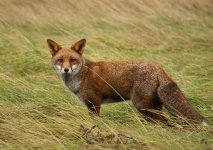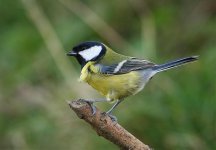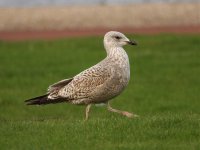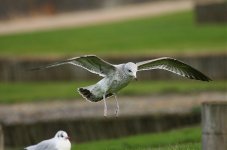SteveClifton
Well-known member
I bought a used 40D recently, and have borrowed a friends 100-400L lens for the past couple of weekends just to see what results I can get from it.
After my second outing I'm becoming increasingly impressed by the quality of the images I've got with relatively little practice (4 examples attached, all cropped at least 50%, and processed in Picassa-sharpened a little etc). The light wasn't great yesterday so I was on 400 ISO or above, quite typical of the light at this time of year.
I had it in mind that I wanted a 400f5.6, mainly for its reputed sharpness, lighter weight, integrated hood, lower cost etc, but now I'm not so sure.
Am I going to find it harder to get pics as sharp as these without the IS which this lens has? or will I need to use a tripod with the prime lens most of the time, therefore offsetting its weight advantage ?
I would also consider the 300 F4 IS with a 1.4TC if anyone thinks it would be a viable alternative, as I take a lot of dragonfly and butterfly pictures with my current 50-200SWD Olympus lens during the summer months. The close focus of the 300 would therefore be a bonus, though I think a Sigma 150 macro will soon fill this niche.
Thanks for all and any advice,
Cheers,
Steve
After my second outing I'm becoming increasingly impressed by the quality of the images I've got with relatively little practice (4 examples attached, all cropped at least 50%, and processed in Picassa-sharpened a little etc). The light wasn't great yesterday so I was on 400 ISO or above, quite typical of the light at this time of year.
I had it in mind that I wanted a 400f5.6, mainly for its reputed sharpness, lighter weight, integrated hood, lower cost etc, but now I'm not so sure.
Am I going to find it harder to get pics as sharp as these without the IS which this lens has? or will I need to use a tripod with the prime lens most of the time, therefore offsetting its weight advantage ?
I would also consider the 300 F4 IS with a 1.4TC if anyone thinks it would be a viable alternative, as I take a lot of dragonfly and butterfly pictures with my current 50-200SWD Olympus lens during the summer months. The close focus of the 300 would therefore be a bonus, though I think a Sigma 150 macro will soon fill this niche.
Thanks for all and any advice,
Cheers,
Steve








